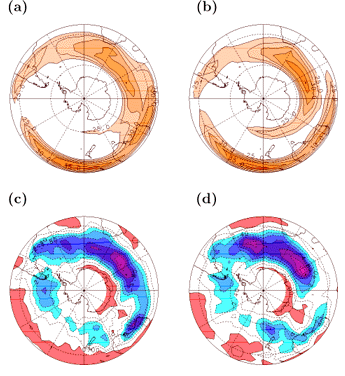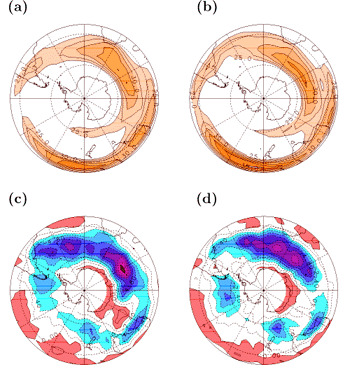Next, to see the relationship between the stratospheric wave pattern and the characteristics of upper tropospheric circulations, the composite analysis was made of 300hPa monthly-mean zonal winds U, together with horizontal heat flux T'v'associated with the high-pass filtered disturbances with a time-scale less than 10 days, according to the positive and negative category of the stratospheric EOF1 and EOF2 shown above, for September of 1979-1998. Both of the 300hPa zonal winds and heat flux are considered to be representative of tropospheric circulations relating to the activity of baroclinic unstable waves.
As is shown in Fig.2a and 2b, the westward (EOF1>0) and eastward (EOF1<0) drift of the stratospheric wave correspond to the single and double jet structure of the upper troposphere over the eastern hemisphere.
As for the hemispheric pattern of heat flux (Fig.2c,d), the wave activity is dominant over the Indian Ocean in general. The difference between the EOF1 positive and negative category is the intensity.

Figure 2. Composite monthly mean zonal wind U(a,b),and horizontal eddy heat flux T'v'(c,d) for the group with the positive (a,c,),negative (b,d) PC1 index.
Fig.3 shows the correspondence of U and T'v'to the stratospheric wave amplitude (EOF2). The difference between the composite of positive and negative category appears in the heat flux pattern, not only the location of the maximum but also the intensity. This suggests that the intensity of planetary waves in the SH stratosphere is mainly controled by the transient troposphric waves through their vertical energy fluxes.

Figure 3. Same as Fig 2, but for the group with the positive (a,c),and negative(b,d) PC2 index.